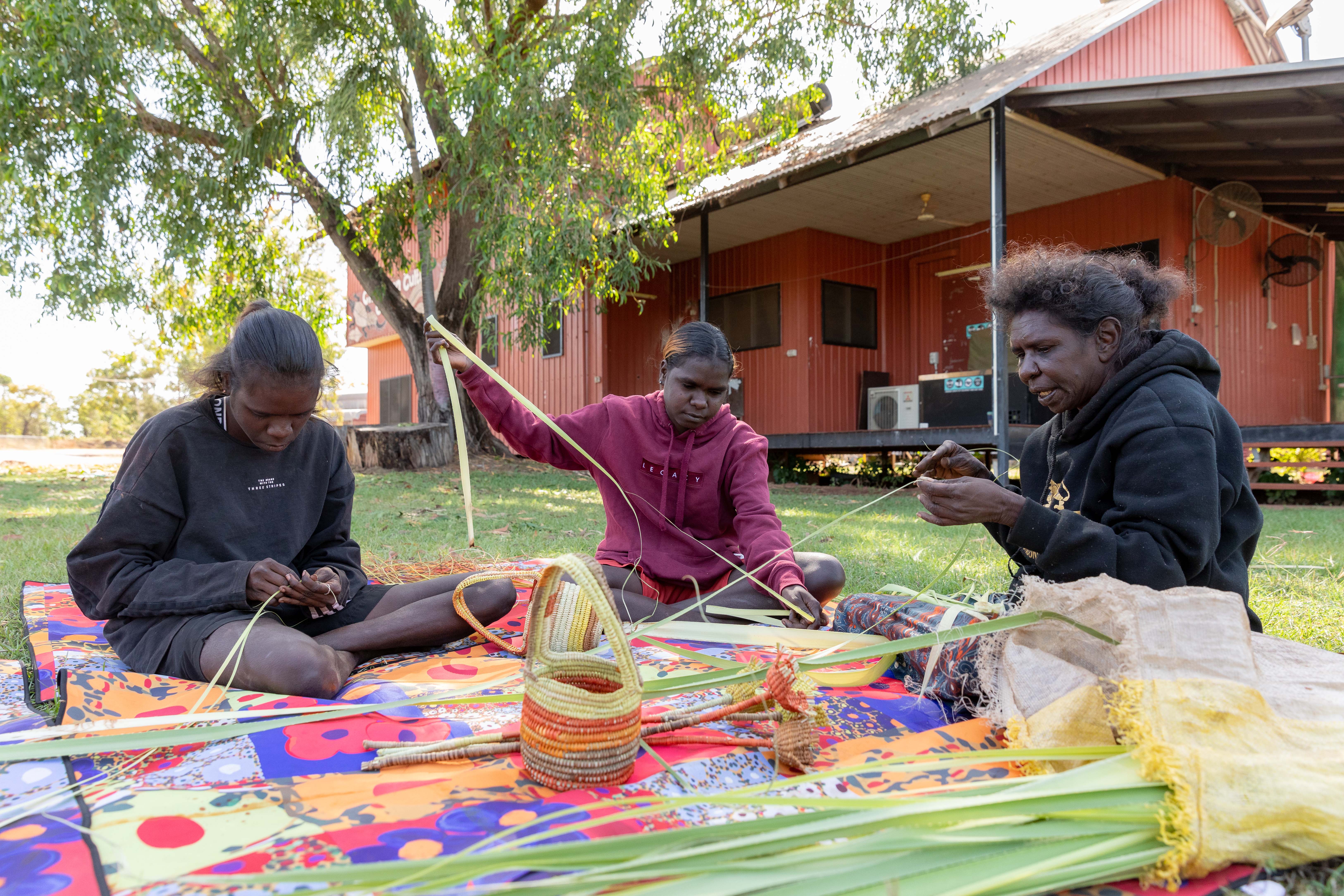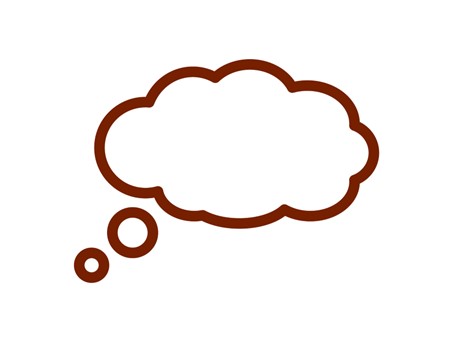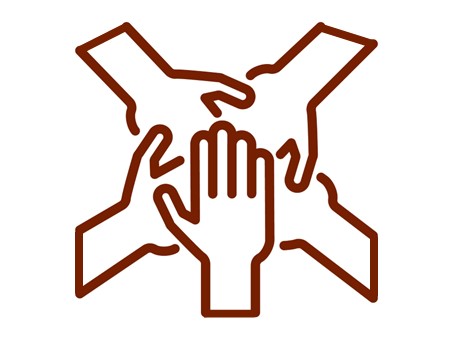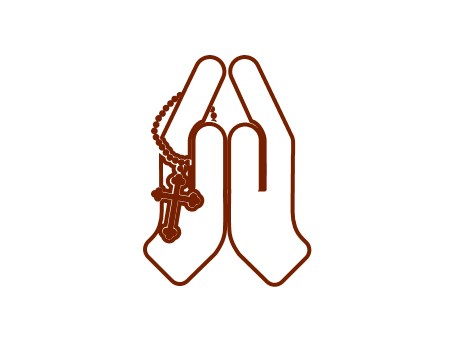Lower Primary
Subsidiarity and Participation
What are my gifts and talents?

Janice (right) shows her daughters how to prepare pandanus leaves to make fibre artworks to sell. Photo: Richard Wainwright
Inquiry Question: What are my gifts and talents?
By the end of this unit, students will understand that everyone has different gifts and talents that God has gifted them with. They will learn about the different gifts and talents they themselves and others have, and in doing so be able to see that every individual has been uniquely created by God.
Before you start:
- Watch the Catholic Social Teaching (CST) film, ‘Subsidiarity and Participation’, for your own background knowledge.
- Read/watch the stories and videos linked in this learning sequence to determine if they are appropriate for your class.
- Download the various resources referenced throughout the learning sequence (slides, etc). Have weblinks ready to go on your computer/interactive whiteboard.
- Locate any Scripture passages and copies of Church texts (hyperlinked within the learning sequence below)
- Read Scripture commentaries (hyperlinked within the learning sequence below)
See-Judge-Act-Pray Process
This learning sequence has been created using the ‘See, Judge and Act’ model.
This reflection–action process was first used by a Belgian Catholic priest, Joseph Cardijn (who later became a Cardinal) with Young Christian workers prior to the first World War.
This approach was also recommended in the 1961 encyclical letter written by Pope John XXIII called Mater et Magistra (Mother and Teacher).
Definition
- from the Latin word subsidium, meaning support or assistance
- the idea that people and groups have the right to participate in decisions that affect them and, when they can’t meet their own needs, other parts of society (e.g. the government) act according to their duty to assist with resources and support
- an approach to common life that promotes participation and ensure people are architects of their own development
Student-friendly explanation:
-
All people should be able to participate in their community and have a say in decisions that affect them.
Learning intention
We are learning:
- the difference between a gift and talent
- what are own gifts and talents are
- about the fruits of the Holy Spirit
- that God has provided us with different gifts and talents; not one of us are the same
- how we can use our gifts and talents to help others.

SEE
Read or watch ‘A hero like you’ by Nikki Rogers.
Explore what a gift and a talent is. Discuss how they are different. A (spiritual) gift is given by God through the Holy Spirit. A talent an inherited or self-developed ability to do something well.
Provide examples of gifts and talents explored in the book, ‘A hero like you’ by Nikki Rogers.
Jesus teaches that God gifts us with Fruits of the Holy Spirit. Listen to ‘Fruit of the Spirit’ by KidSpring Children’s Ministry to introduce the Fruits of the Holy Spirit. After the video, display the Fruits of the Holy Spirit slides from the Subsidiarity and Participation presentation and explain the meaning of the different fruits. Explain that God has gifted us with all these characteristics so that we can serve others in love.
Re-watch the ‘Fruit of the Spirit’ and learn the dance or have students in small groups to come up with new actions to represent each of the Fruits.
Teacher’s Note: utilise the Scripture commentary to assist in the explanation of each Fruit of the Holy Spirit, if needed.
Read or watch “Spoon” by Amy Krouse Rosenthal and Scott Magoon. Discuss the different gifts and talents that the utensils highlighted about one another. Record these on the whiteboard to assist students with the next activity.
Provide each student 3 pieces of recycled paper. Ask them to go to 3 different people in the class and share a gift or talent they know the other person has. Ask them to write down the gift or talent on the recycled paper before handing it over to the person. Encourage students to engage with people they do not normally. Once students have 3 notes with a gift or talent written on them, they are to return to their seats.
Students reflect on what they believe their gifts and talents are by creating a collage using words and/or images they have found in recycled newspapers and magazines. Provide students poster paper with their name recorded in the middle. Conduct a gallery walk to allow students time to explore one another’s collages. Display these around the classroom to show the diversity of gifts and talents in the class.
Invite students to Turn and Talk to explore how the fruits of the Holy Spirit make us a superhero. Explore the idea that the gifts and talents are our superpowers. Everyone has unique abilities and qualities as God made us all different from one another.

JUDGE
As Christians, we are called to use our gifts and talents to help one another, especially those who are disadvantaged in the world. Display the quote, 1 Peter 4:10 from the Subsidiarity and Participation presentation. Using Turn and Talk, students explore how they can use their gifts and talents to help others.
Read Shaniella’s story and discuss the skills Shaniella learnt while at the rural training centre, and how she is able to use her new-found gifts and talents to help others.
Teacher’s Note: There are additional activities listed in this resource you may choose to do.

Act
Have students participate in a “Gifts and Talents showcase”. Each student share’s their unique abilities, whether it’s drawing, singing, storytelling or problem-solving. Encourage students to collaborate. How can their talents complement each other?
Students may like to have a public showcase at lunchtime or at a school-event as a fundraiser for Caritas Australia.
Discuss how their actions contribute to helping others.
Teacher’s Note: The class may like to perform the “Fruit of the Spirit” song from earlier in the learning sequence.

Pray
Ask students to sit in a circle.
Begin by thanking God for the countless gifts and talents God has shared with every individual.
Invite students to share a gift or talent that they have been gifted by God.
Conclude by asking God to help us to use our many gifts and talents to be able to help one another, especially those who are disadvantaged throughout the world.












